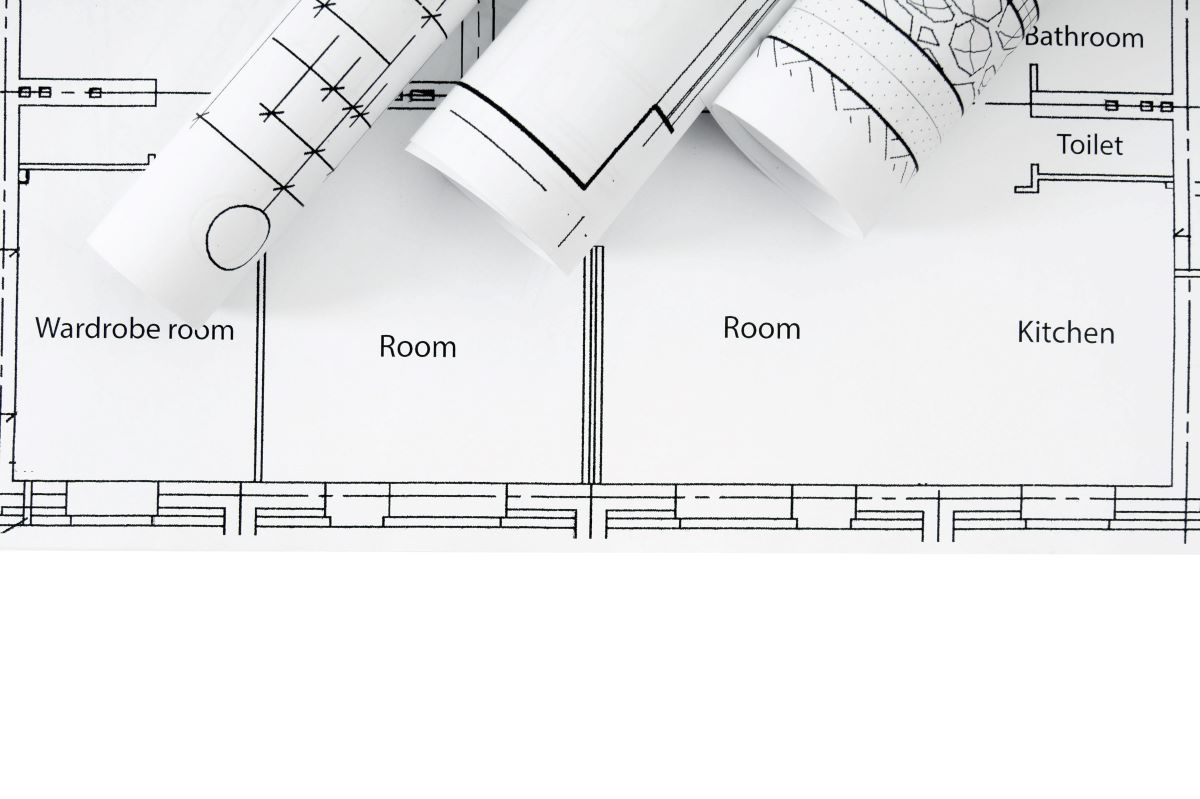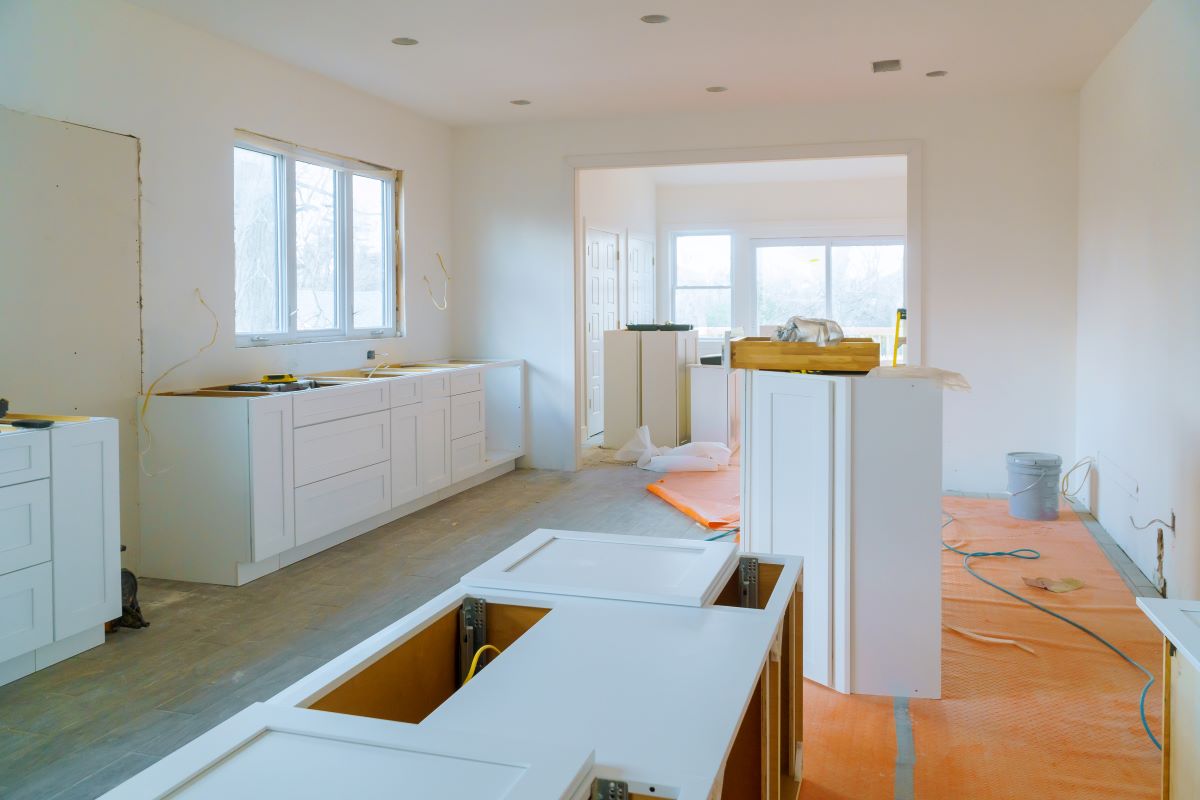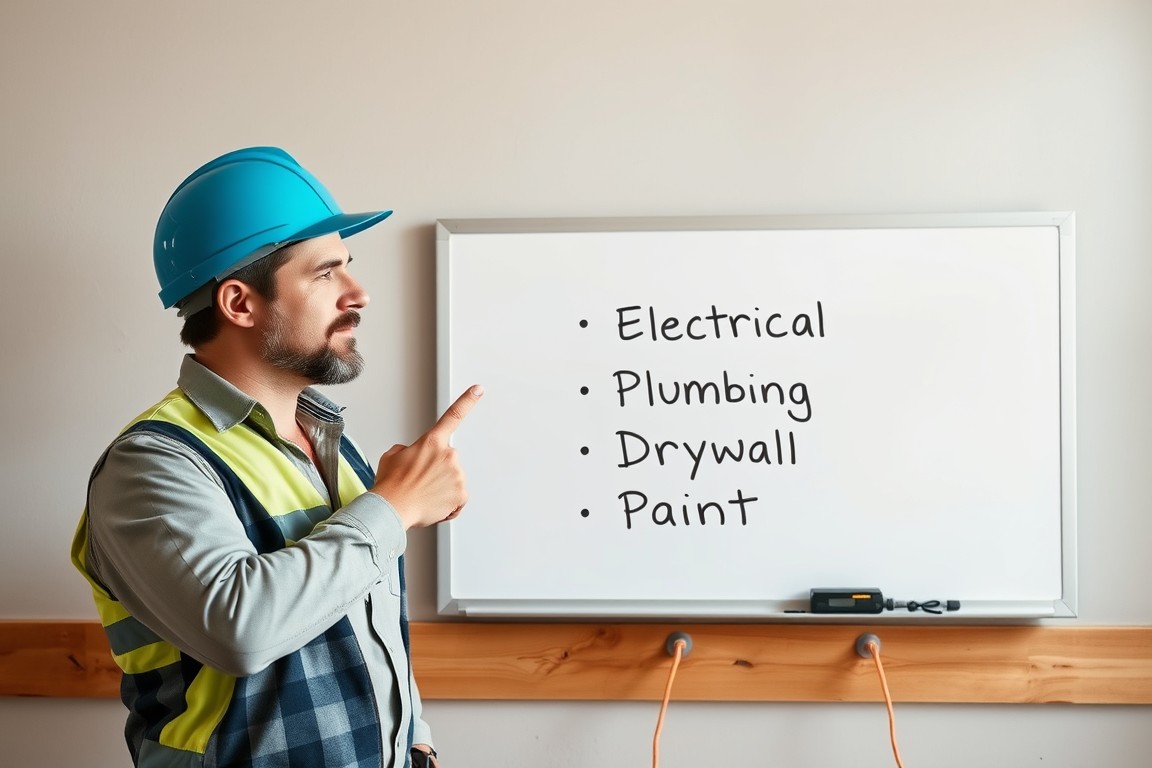Your home should be a reflection of your lifestyle, personality, and needs. When a space starts to feel outdated, dysfunctional, or simply uninspiring, working with an experienced interior remodeling contractor can completely change the way you live. From layout adjustments to luxury kitchen renovations, remodeling isn’t just about fixing what’s broken—it’s about creating a better way to live.
Whether you’re looking to update a single room or renovate an entire house, remodeling contractors bring the expertise, vision, and craftsmanship needed to take your home to the next level. This guide explores how interior remodeling contractors transform living spaces, what to expect throughout the process, and how to make the most of your remodeling investment.
The Role of Interior Home Remodeling Contractors
Interior remodeling contractors specialize in redesigning and renovating the functional and aesthetic features of indoor living spaces. Unlike basic handyman services, these professionals offer comprehensive project management—from demolition and material sourcing to construction and finishing touches.
A qualified interior home remodeling contractor works closely with homeowners to address outdated layouts, inefficient use of space, aging fixtures, and design inconsistencies. Whether the goal is to modernize a kitchen, open up a living area, or create a more luxurious master suite, they ensure that every detail aligns with your vision and goals.
Partnering with a skilled general contractor for home remodel work ensures seamless coordination across trades, quality control, and timely execution—all of which are essential for a successful renovation.
Common Projects Handled by Remodeling Contractors
Remodeling contractors are equipped to handle a variety of interior upgrades, including:
- Kitchen renovations and layout redesigns
- Bathroom upgrades with improved storage and lighting
- Open floor plan conversions
- Living room expansions
- Whole-house flooring and trim updates
- Basement finishing and garage conversions
- Lighting, paint, cabinetry, and hardware upgrades
While many people start with one room, a full-service home remodeling contractor can guide you through a phased plan to upgrade your entire home over time.
 Is $50,000 Enough to Renovate a House?
Is $50,000 Enough to Renovate a House?
The idea of a $50,000 home renovation sounds ambitious—and in many cases, it is. Whether or not that budget will be sufficient depends on several key factors: the size of your home, the rooms being renovated, your location, the quality of materials you choose, and whether you hire a professional home remodeling contractor or attempt some aspects as DIY.
The good news? With proper planning and the right remodeling contractors, a $50,000 budget can significantly improve your living space. However, it’s important to be realistic about what can be achieved within that amount and where compromises might need to be made.
Factors That Affect Renovation Costs
Before determining if $50,000 will be enough, consider these variables that directly influence your renovation budget:
Scope of Work
Are you remodeling the entire house or just a few rooms? A full home renovation—including multiple bathrooms, kitchen, living areas, and possibly some structural changes—could easily exceed that figure. However, a focused remodel on two or three key rooms can absolutely be completed within the $50,000 range.
Which Rooms You’re Remodeling
Some rooms are significantly more expensive to renovate than others. For instance:
- Kitchen renovations often range from $25,000 to $75,000, depending on layout changes, appliance upgrades, and finishes.
- Bathrooms can cost $10,000 to $25,000 per room, depending on plumbing, tilework, and fixture upgrades.
- Living rooms, bedrooms, or offices may be updated for $5,000 to $15,000 each, especially when cosmetic changes like flooring, paint, and lighting are involved.
Labor and Materials
The cost of hiring a general contractor for home remodel work includes labor, project management, and often a markup on materials. Choosing mid-range finishes and working with a reputable interior home remodeling contractor can help keep costs manageable without sacrificing quality.
Location
Renovation costs vary greatly based on your geographic location. Labor and materials are typically more expensive in urban or high-demand areas. In Texas, for example, where DWR Interiors is based, $50,000 may go further than in states with higher costs of living.
What Can You Realistically Renovate for $50,000?
Here are some realistic renovation options that can be completed within a $50,000 budget when managed efficiently by a home remodeling contractor near you:
Option 1: Moderate Kitchen Renovation
- New cabinets (semi-custom)
- Stone countertops
- New appliances (mid-range)
- Updated flooring
- Lighting and plumbing fixtures
- Minor layout changes
Hiring kitchen remodeling contractors for this type of project ensures that the electrical, plumbing, and appliance installations are done to code and built to last.
Option 2: Two Bathroom Remodels
- Tile showers and updated vanities
- New toilets and lighting
- Flooring and paint
- Upgraded hardware and storage solutions
Working with experienced remodel house contractors ensures efficient coordination of subcontractors (plumbers, electricians, tile installers) and timely project completion.
Option 3: Whole-Home Cosmetic Refresh
- New flooring throughout (laminate, engineered wood, or mid-grade carpet)
- Interior painting
- Light fixture replacements
- Trim and molding updates
- Minor repairs or drywall work
A cosmetic upgrade like this, handled by a skilled general contractor remodeling team, can dramatically transform your home’s appearance and comfort level.
How to Stretch Your Budget
To make the most of a $50,000 renovation budget, consider the following strategies:
- Prioritize high-impact spaces: Kitchens and bathrooms often offer the best return on investment.
- Avoid moving plumbing or structural walls unless absolutely necessary, as this can drive up costs.
- Select durable mid-range materials that offer style without the premium price.
- Work with an experienced contractor who can help you identify savings without compromising quality.
A good home remodeling contractor will help you prioritize your goals and develop a phased renovation plan that stays within your budget.
Work With the Right Team
Ultimately, your budget will stretch further when you work with professionals who understand how to manage time, materials, and labor effectively. A skilled interior home remodeling contractor will help you plan each phase, avoid common pitfalls, and deliver a finished product that looks more expensive than it actually was.
If $50,000 is your budget, you’re not limited—you’re empowered to make meaningful changes to your home. Whether you’re planning kitchen renovations or refreshing your entire interior, the right contractor can help you get the most value for every dollar spent.
 What Is the Hardest Room to Renovate?
What Is the Hardest Room to Renovate?
When it comes to remodeling a home, every room brings its own challenges—but most experts and homeowners agree that the kitchen is the hardest room to renovate. It’s the most complex space in the house due to its mechanical requirements, heavy usage, and the number of design and material decisions involved. From plumbing and electrical work to cabinetry, appliances, and tile installation, kitchen renovations demand extensive planning and professional expertise.
Whether you’re hiring a contractor for kitchen remodel services or considering a full home remodeling contractor team to oversee a larger project, understanding why the kitchen is so demanding can help you plan better and avoid costly missteps.
Why Kitchens Are the Most Challenging to Remodel
High Functionality Requires Smart Design
The kitchen isn’t just another room—it’s the heart of the home. It needs to be both beautiful and highly functional. A poorly designed kitchen can disrupt your entire household routine. Unlike a bedroom or living room, a kitchen must accommodate cooking, cleaning, food storage, prep space, and social interaction—all within a compact layout.
This means that your kitchen remodeling contractors must design around the work triangle (sink, stove, refrigerator), optimize cabinetry for storage, and ensure that every square foot serves a purpose.
Multiple Trades Must Coordinate
Renovating a kitchen involves coordination between many skilled professionals, including:
- Plumbers
- Electricians
- Cabinet installers
- Tilers
- Countertop fabricators
- Painters
- Flooring specialists
A general contractor for home remodel projects will coordinate all these moving parts and maintain the timeline, but the complexity of managing various trades is one of the reasons kitchen remodels are so challenging.
Involves Extensive Plumbing and Electrical Work
Kitchens are heavily reliant on plumbing and electrical systems. Renovating may require moving water lines, installing new gas or electric ranges, and adding outlets or lighting. Any changes to these systems must meet local building codes and often require permits and inspections.
A qualified general contractor remodeling team ensures that all mechanical systems are updated correctly, safely, and legally.
Expensive Materials and Appliances
Cabinetry, countertops, and appliances typically make up the bulk of a kitchen renovation budget. Homeowners often want high-quality, long-lasting materials in their kitchen, which increases the cost and stakes of every design decision.
Common upgrades include:
- Stone countertops like quartz or granite
- Custom or semi-custom cabinetry
- Energy-efficient or smart appliances
- Designer tile backsplashes
- Hardwood or luxury vinyl plank flooring
These selections impact not only the cost but also the timeline, as custom items often have longer lead times.
Minimal Room for Error
In the kitchen, every measurement must be exact. Cabinets must align perfectly. Appliances must fit snugly between counters. Electrical outlets must match code placement, and plumbing fixtures must be properly positioned. Small miscalculations can lead to delays, additional labor, or reordering expensive materials.
That’s why hiring an experienced interior home remodeling contractor is crucial—they bring the precision and foresight required for a successful kitchen transformation.
Other Difficult Rooms to Remodel
Although the kitchen is widely considered the most complex room to renovate, bathrooms come in as a close second. Like kitchens, bathrooms have strict layout constraints and involve plumbing, electrical, waterproofing, and tile work. In smaller bathrooms, the challenge is maximizing functionality without overcrowding the space.
Laundry rooms, basements, and open-concept living areas can also pose challenges, especially when load-bearing walls are involved or when the rooms lack existing infrastructure.
How to Make a Kitchen Renovation Easier
While it’s clear the kitchen is a tough room to tackle, a professional home remodeling contractor near you can make the process manageable. Here’s how to set yourself up for success:
- Plan thoroughly: Don’t rush through the design phase. Finalize your layout, appliances, and materials before demolition starts.
- Hire experienced contractors: Look for kitchen remodeling contractors with a proven track record of delivering complex remodels on time and on budget.
- Build in flexibility: Expect a few surprises—hidden damage, delayed materials, or change orders are common in kitchen renovations.
- Set a realistic timeline: Kitchen remodels typically take 6 to 12 weeks, depending on the scope. Plan accordingly to minimize disruption.
In summary, the kitchen’s complexity makes it the most difficult room to renovate—but it’s also the most rewarding. A beautifully remodeled kitchen not only enhances your lifestyle but also boosts your home’s value. With the guidance of a skilled remodel house contractor, you can navigate the challenges and enjoy a result that’s well worth the effort.
 In What Order Do You Remodel a Room?
In What Order Do You Remodel a Room?
If you’re focusing on just one room, understanding the correct order of operations ensures smoother progress and helps prevent rework or budget overruns. A professional home remodeling contractor will generally follow this order when remodeling a room:
Planning and Design
Before any work begins, your contractor will help you plan the layout, select materials, and confirm measurements. This is the time to finalize colors, fixtures, cabinetry, and flooring.
Demolition
Old finishes, flooring, cabinets, and fixtures are removed. This clears the space for new construction.
Structural or Layout Changes
If you’re removing or adding walls, reconfiguring the ceiling, or expanding the room’s size, these structural changes happen early.
Mechanical Upgrades
This includes plumbing, electrical, HVAC, and lighting installation. These must be completed before walls are sealed up.
Drywall, Painting, and Finishes
Once mechanical work is complete, drywall is hung and finished. Afterward, the room is primed and painted.
Flooring Installation
New floors are installed next, whether it’s tile, hardwood, or luxury vinyl.
Cabinetry and Fixtures
Cabinets, vanities, countertops, and light fixtures are installed toward the end of the process to avoid damage during earlier phases.
Final Touches
The project wraps up with hardware installation, detail paint touch-ups, and final inspections.
By following this logical progression, your general contractor remodeling team ensures the process stays on track and delivers quality results with minimal disruption.
How Contractors Transform Your Living Space
An interior home remodeling contractor doesn’t just make things look nicer—they transform how your home feels and functions. Here’s how they do it:
- Improved Flow: Contractors assess how you use your space and reconfigure layouts to maximize flow and usability.
- Lighting Enhancements: Updating lighting makes rooms feel brighter, larger, and more welcoming.
- Modern Materials: New flooring, countertops, and cabinetry not only look fresh but improve durability and energy efficiency.
- Storage Solutions: Custom cabinetry and creative design strategies help you get more out of your square footage.
- Open Concept Layouts: Removing walls or reworking traffic patterns creates a more connected and breathable feel.
These transformations are guided by your goals—whether it’s entertaining, comfort, functionality, or aesthetics.
Your Guide to Hiring a General Contractor for Home Remodeling
Finding the right professional is the first step in a successful renovation. Before starting your project, be sure to read Your Guide to Hiring a General Contractor for Home Remodeling.
This helpful guide explains how to:
- Screen potential contractors
- Check for licenses and insurance
- Compare bids and evaluate timelines
- Set expectations and communication standards
The right contractor will serve not only as a builder but also as your project manager and design collaborator.
Why Homeowners Choose DWR Interiors
DWR Interiors has earned a reputation as a trusted and reliable home remodeling contractor for homeowners in The Woodlands and nearby communities. With years of experience handling everything from modest room updates to full kitchen renovations, our team is equipped to bring your ideas to life.
We take pride in:
- Transparent pricing and realistic timelines
- Experienced project management from start to finish
- Clean job sites and respectful teams
- Clear communication at every step
Our full-service approach means you only need one point of contact for design, construction, and finishing work—saving you time and minimizing stress.
Whether you’re updating a bathroom, tackling a kitchen remodel, or planning a full interior overhaul, we bring the skill and care needed to create spaces that work for you and your family.
Ready to Transform Your Home?
If you’re dreaming of a home that feels fresh, functional, and more aligned with your lifestyle, DWR Interiors is here to help. Our remodeling contractors are ready to guide you through the process—from the first design sketch to the final walk-through.
Call us today at 281-419-4144 or contact us online to schedule your consultation.
Let’s build something beautiful together.

 Is $50,000 Enough to Renovate a House?
Is $50,000 Enough to Renovate a House? What Is the Hardest Room to Renovate?
What Is the Hardest Room to Renovate? In What Order Do You Remodel a Room?
In What Order Do You Remodel a Room?